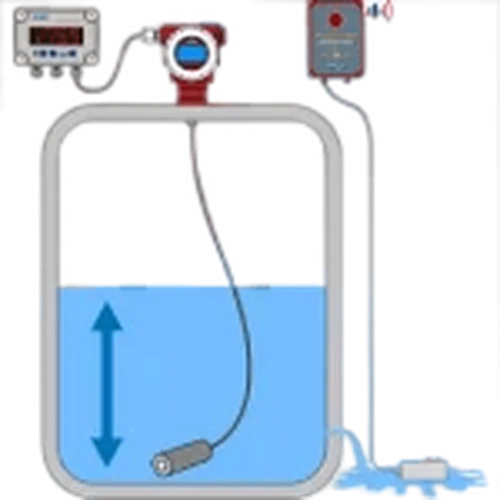How Does A Submersible Level Sensor Work?

A submersible level sensor works by measuring the distance between the sensor probe and the liquid surface. The sensor probe is a pressure transducer that is immersed in the liquid. The submersible level sensor also known as a pressure transducer measures the hydrostatic pressure of the liquid at a specific point.
When the float or pressure transducer is immersed in the liquid, it sends an electrical signal to the signal transmitter. The signal transmitter converts the electrical signal into a 4-20mA loop-powered signal, which can be easily integrated into a control system.
The 4-20mA signal is a standard current loop used for process control and industrial automation, it is a two-wire current loop where the current is directly proportional to the measured variable.
The signal transmitter also includes a microcontroller that processes the measurement data and sends it to the control system. The control system can then use the measurement data to control pumps, valves, or other equipment.
The submersible level sensor is designed to be robust and durable, making it suitable for use in harsh industrial environments. It can withstand high temperatures, pressure, and vibration, and it is also resistant to corrosion.
Additionally, Submersible level sensors can be used in different types of tanks, such as open tanks, closed tanks, and pressurized tanks, and in different types of liquids, such as water, oil, and chemicals. They are also suitable for use in tanks with turbulent liquids or high levels of noise.
In summary, the submersible level sensor works by measuring the distance between the sensor probe and the liquid surface, the sensor probe can be a float or pressure transducer. The signal transmitter converts the electrical signal into a 4-20mA loop-powered signal, which can be easily integrated into a control system. The sensor is robust and durable, suitable for use in harsh industrial environments, and can be used in different types of tanks and liquids.
Learn more about level sensors
Please contact us to discuss your application


